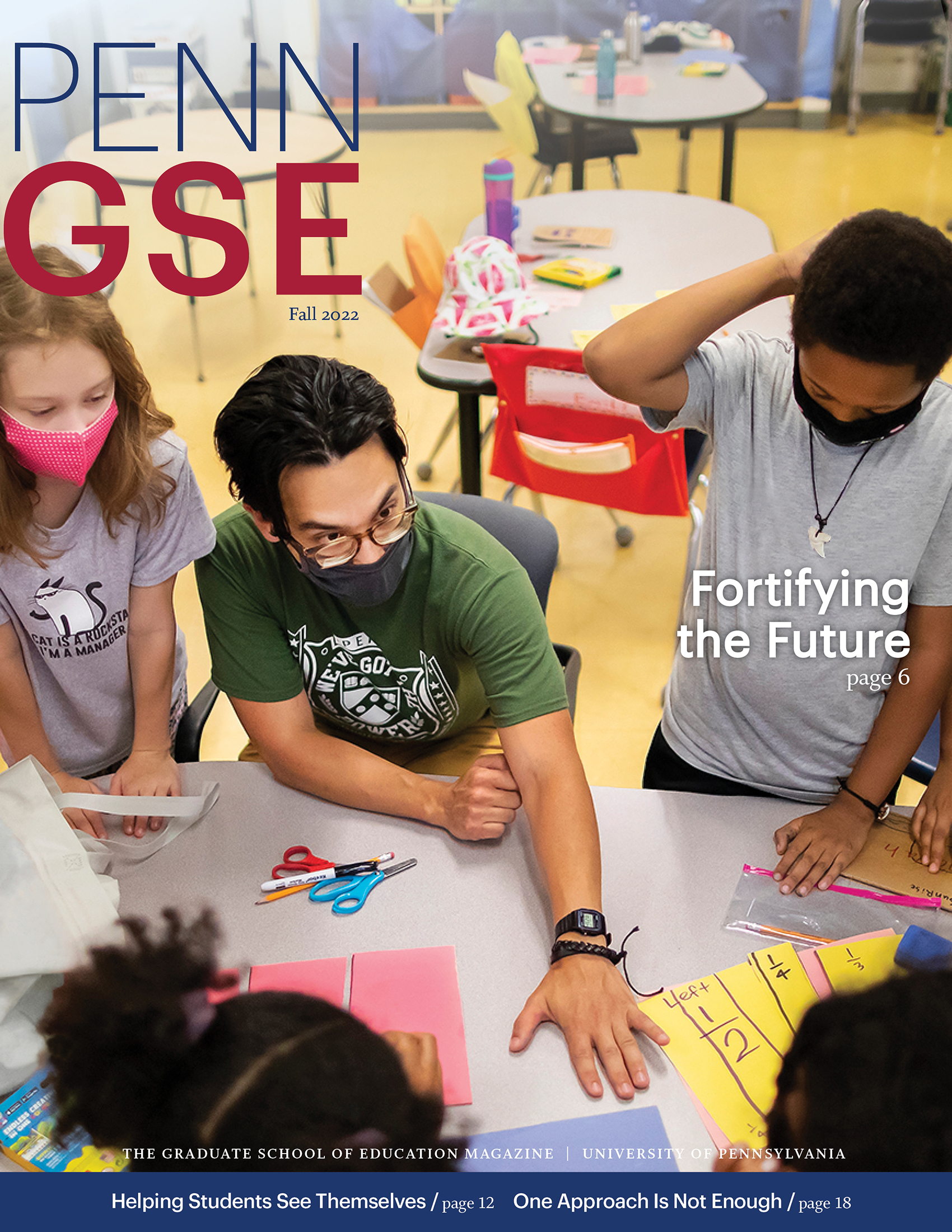Fortifying the Future
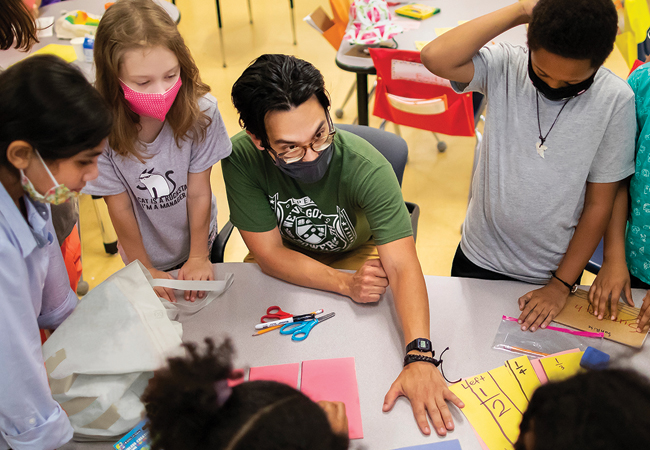
Photo by Eric Sucar, University Communications
By Karen Brooks
It is one of the most challenging paradoxes of our time: Teachers are a critical component of student success, yet rampant teacher shortages are creating difficulties for school districts across the United States, frustrating school boards, administrators, parents, and students, alike.
Research shows that teachers’ effect on long-term student performance goes beyond students’ academic achievement, influencing not just how far they go in school but also the eventual wages they earn once working. (One large study, for example, found that students assigned to particularly effective teachers in a single year were more likely to attend college, earn higher salaries, and were less likely to have children as teenagers.) But in order for students to benefit from good teachers, those teachers must be recruited, prepared, developed, and retained. And at a time when the United States has at least 36,000 unfilled teacher vacancies, it is challenging to do all four.
Penn GSE is committed to changing that. This year, its teacher education programs are preparing more than 150 future educators to enter the field via three programs. For decades, the School has offered these preparation programs to give teachers the tools and knowledge they need to succeed in the classroom. Today, two of its teacher education programs, the Urban Teacher Apprenticeship Program (UTAP) and Urban Teaching Residency (UTR) program, prepare teachers to work in urban environments, where schools—and students—are hit particularly hard by teacher turnover. A third program, the Independent School Teaching Residency (ISTR) program, partners directly with the day schools and boarding schools in which their students teach.
“Every year K–12 schools have about 200,000 vacant positions to fill. But the work of teacher education isn’t just about maintaining a pipeline of educators or making sure that there are enough people prepared to enter the profession,” said Penn GSE Dean Pam Grossman. “It’s about the deep work of developing quality educators, making sure these new teachers are adequately prepared for the classrooms they will lead, and offering support for the challenges they will face.”
The goal of the School’s three programs, says Dean Grossman, is to ensure that students, particularly those with the greatest need, can have the benefit of learning from seasoned professionals.
“We need to support teachers in knowing how best to teach, especially in their early years, so they can do their best job and also stay in the classroom—because for kids, the difference between having a first-year teacher versus a teacher with eight or ten years under their belts is significant,” says Dean Grossman.
The Struggle is Real
While teacher shortages are not new, the COVID-19 pandemic caused an unprecedented strain on the nation’s education system, driving more than half a million primary and secondary educators out of the profession since the beginning of 2020, according to the US Bureau of Labor Statistics. Penn GSE Professor of Education and Sociology Richard Ingersoll, who has devoted his career to analyzing national teacher survey statistics, says that relatively low pay, insufficient classroom resources, a lack of appreciation—real or perceived—from their students and from professionals in other fields, and a lack of teacher autonomy cause as many as half of all teachers to quit within their first five years.
According to Ingersoll, “a significant factor is micromanagement, where there’s a scripted curriculum and every class has to be on the same chapter in the same week, teaching to the same test. Teachers rarely have the discretion to say, ‘I know my students, and their needs are different, so I need some leeway here.’”
School environments in which teachers have more voice have better teacher retention. But, Ingersoll says, this issue particularly affects teachers of color, who are more likely to staff schools in low-income and Black and Brown communities, which have high turnover rates—a concern given that Black students who have even one Black teacher during elementary school are more likely to complete high school and apply to college.
Senior Associate Director and Coordinator of Fieldwork and Coaching for UTAP Jasmine Marshall-Butler studies the experiences of minority teachers. She agrees with Ingersoll that the challenges of working in under-resourced environments hastens burnout.
“These teachers feel an immense responsibility to take care of their students, not just in the classroom, but after they leave and before they get there in the morning,” Marshall-Butler explains. “Teachers, in general, don’t have enough resources, and teachers in these cases really don’t have enough resources.”
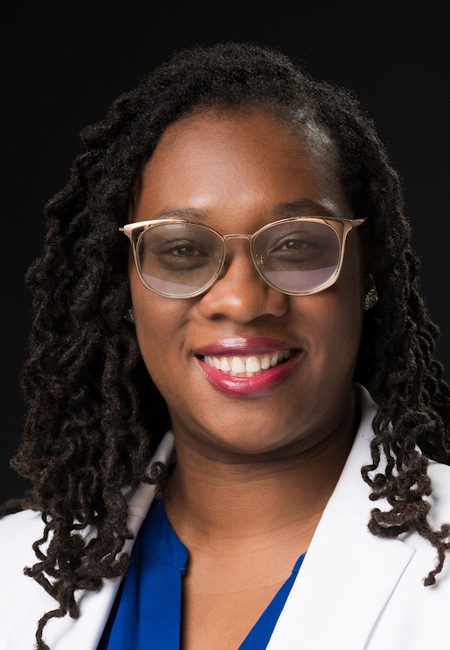
A former English teacher, Marshall-Butler adds that, since teachers of color often work in urban settings, they confront more community violence than white teachers, compounding other stressors. She is researching how Black teachers respond when their students are victims of gun violence—a study inspired by the murders of three of her students during the five years she taught at a Chicago high school.
“I wanted to know if other teachers were pushed right back into the classroom right after getting the news, like I was, without having time to process their own feelings,” she says. “Nobody had time for me to be upset, because I needed to support my other students through their grief, even though I couldn’t support myself.”
Through her interviews with teachers in similar situations, Marshall-Butler has discovered an almost universal struggle to cope.
Ready to Serve
Although universities can’t change K–12 teachers’ salaries or working conditions, they can prepare their graduates to succeed in the environments where they aim to teach—a primary objective at Penn GSE.
“Teachers are not making automobiles; they are making adults out of kids. And kids vary. There is no one-size-fits-all model for how you build a teacher who can teach anywhere really well,” Ingersoll says. “Schools of education are often criticized for being stodgy and overly traditional—but we have innovative models here at Penn, because jobs are very different in different places, and different jobs take different kinds of preparation.”
Penn GSE's three master’s programs in teacher education are designed to meet the needs of those who enroll, as well as the students they will teach. Executive Director Patrick Sexton oversees the three programs—UTAP, UTR, and ISTR—and views his role as far more than supervisory.
“I’m looking to amplify Penn’s stamp on the world when it comes to teacher
preparation,” Sexton says. “Our programs are laboratories, and we can leverage what we’re learning inside them to impact the research faculty does and policies at the state and national levels.”
UTR and UTAP partner directly with Philadelphia schools, but they serve learners in different ways. Often unable to pursue higher education without a steady income, UTR students complete their master’s degree and certification while teaching full-time independently. Instead of serving as a lead teacher, UTAP students earn their credentials while spending a year apprenticing under an experienced teacher.
As a former teacher at under-resourced schools and the person who coordinates partner-school placements for UTAP students, Marshall-Butler knows firsthand the value of preparing teachers for the specific demands of urban schools, which she says requires knowledge beyond grade-level subject matter.
“We make our teachers aware of the issues plaguing their students—poverty, food deserts, gun violence—that students in suburban or rural schools might not encounter,”
she says. “Some programs won’t even touch on these things, but our teachers know what baggage their students are bringing to the classroom, and I don’t mean their backpacks. We give them skills to ensure their students feel safe, heard, and valued.”
Just as importantly, she notes, UTAP students are also pushed to reject the “deficit thinking” they may have espoused before entering the program.
“We immerse them in neighborhoods across the city to learn about and experience the joy their students encounter each day. They are introduced to key community members to learn the rich history of their school and dive into ways to positively impact their students, school, and larger community,” she says.
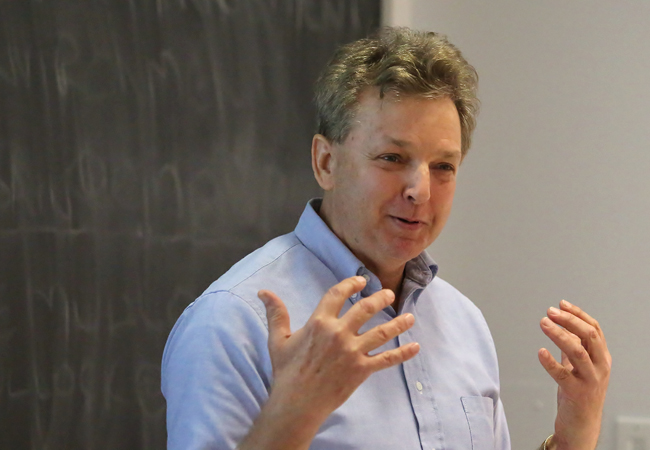
“Teachers are not making automobiles; they are making adults out of kids. And kids vary. There is no one-size-fits-all model for how you build a teacher who can teach anywhere really well.” —Professor Richard Ingersoll
Aspiring teacher Maria Cetrone chose UTAP because its emphasis on educational equity aligned with her commitment to working at an urban public school.
“Everything we do in [UTAP] is grounded in equity and social justice,” says Cetrone, an apprentice in a third-grade classroom at Philadelphia’s George W. Nebinger Elementary School. “Every strategy we learn, every discussion we have, and every bit of research we take part in is focused on how to best serve our students, especially those who have been traditionally overlooked and oppressed by our current system.”
The ISTR program serves learners with different career goals by collaborating directly with an established group of partner schools. Early career teachers from those schools earn their master’s degrees through a two-year fellowship, taking classes during extended quarterly gatherings and online. A focus on equity, diversity, and educational justice runs throughout.
“When we talk about history and social context in ISTR, we’re asking, ‘What is your school’s mission, and what does that mean for kids of color in your community? Who are you going to be in this society?’” Sexton says. “There is a significant amount of power, privilege, and resources under the roofs of those schools, so there’s a different question about the relationship to educational justice.”
ISTR student Luis Rivera has explored similar questions in his classroom at Trinity School in New York City. He learned that a student wanted to do a research project about the Stonewall uprising, the historic six-day clash between police and LGBTQ+ activists in 1969, but had selected a different topic because she was afraid her conservative mother would disapprove. Rivera convinced her to follow her interests. The student and her group delivered a stellar presentation on Stonewall, and, at the end of the year, she sent Rivera an email saying his class was unforgettable and that he had expanded her love of history.
“During this experience, I realized that, as a teacher, I have a responsibility and the authority to make a positive impact on my students’ lives,” Rivera says.
Creating Connections
Some teachers find that honesty and vulnerability can help them connect with their students.
During a 2021 discussion about Tim O’Brien’s acclaimed book The Things They Carried, Mackenzi Turgeon prompted her ninth-grade class at Riverdale Country School in the Bronx, New York, to share some of the burdens they carried. Overcoming the butterflies in her stomach, she broke the ice by describing her anxiety about being a brand-new teacher and the challenges she faces as a Black woman in America.
To her delight, students responded by opening up in kind, revealing their own fears, traumas, and insecurities.
“My sharing sparked a conversation where it was clear that students were really connecting with their classmates,” recalls Turgeon, who expects to complete a master’s from ISTR in the spring of 2023. “My mentor told me I was building community through my vulnerability, and that stuck with me.”
A former high school English teacher, Dean Grossman knows rewarding experiences like Turgeon’s are key to keeping teachers energized by their jobs—a goal she says is more important than ever as fallout from the COVID-19 pandemic exacerbates teacher shortages.
Widely recognized for her expertise in teacher learning and professional education, Grossman strives to position Penn GSE as a leader in preparing aspiring teachers for success, as well as identifying ways to support established educators and keep them invigorated. Initiatives like the School’s recently recast teacher education programs and its growing emphasis on research into teachers as learners can help counter high turnover rates among K–12 teachers locally, as well as nationally, Grossman says.
“One of the hallmarks of any profession is an agreement about what proper preparation and high-quality practices look like, and we haven’t codified that in teaching,” she says. “But teachers are the largest in-school factor that matters most to student achievement, so we should be investing in them however we can.”
An Evidence Base
At Penn GSE, efforts to prepare new teachers to enter the workforce are matched by efforts to keep them there—and a robust research program bolsters this mission, says Dean Grossman, who draws attention to three current studies funded by a James S. McDonnell Foundation program that supports research into how teachers learn.
A better understanding of how teachers learn is critical in the improvement of effective professional development, which has been shown to help districts support and retain its teachers.
“We’re excited to have these McDonnell grants, because the foundation has made the biggest investment there has been in teacher learning in a long time,” she says. “This program focuses on classroom discourse—a practice that is ubiquitous but very complex. It is very hard, but very important, to know how best to prepare teachers to engage students in rich dialogic discussion.”
One of the McDonnell grants was awarded to Penn GSE Associate Professor Sarah Schneider Kavanagh, in conjunction with faculty members at three other universities. Kavanagh believes professional development for teachers falls behind that of other fields, contributing to chronic shortages in US schools.
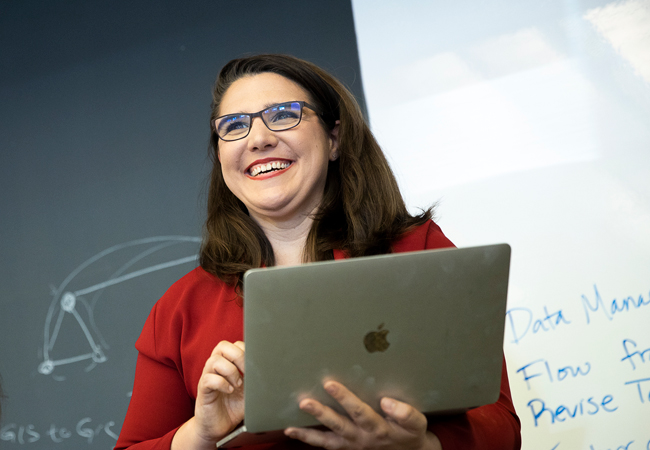
“Teachers often don’t have access to high-quality learning opportunities that allow them to continue to grow and better the profession,” she says. “The design of schools almost never includes a design for teacher learning, and then we wonder why teachers leave after two, three, four, five years.”
For their study, Kavanagh and her co-investigators crafted classroom learning experiences for literature and math teachers who meet as a group, collaborate to plan a discussion-based lesson, then lead that lesson together with students. They subsequently debrief and use student feedback to hone the lesson before trying it again in another classroom.
“The current model is generally to do workshops where we take teachers out of classrooms, away from kids, and teach them about teaching and kids,” Kavanagh says. “Why do we take teachers away from the context of their work in order to teach them about the context of their work?”
“We’re seeing if learning experiences that are relevant to the work teachers do every day improve their learning and their students’ learning, and, if, ultimately, these experiences show teachers that we take their learning seriously so maybe they don’t leave,” she says.
Penn GSE Associate Professor Abby Reisman, along with peers at Temple University, is leading a McDonnell Foundation–supported study into the facilitation of classroom discussion among novice social studies teachers in Philadelphia.
“We’re pushing to invert the stereotypical boring history class, where the teacher just lectures at the students,” Reisman says. “We want students to pose questions, engage with evidence, and come up with their own arguments about the past. Our question is, ‘How do teachers develop with regard to facilitating discussion? What motivates them, and what constrains them?’”
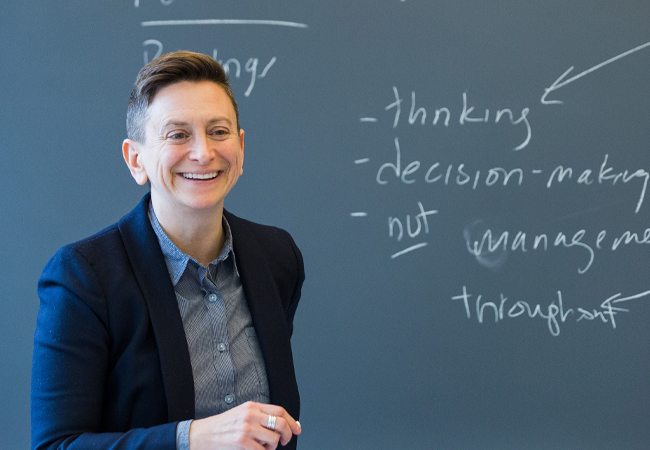
Reisman and her team are video-recording preservice and newly certified teachers as they lead classroom discussions. They then ask the teachers to watch themselves on video and analyze their decision-making processes and their students’ engagement.
“Social studies classrooms have the responsibility of citizenship preparation, and if we can’t get kids to talk with one another and engage across differences, then we are in bad shape,” says Reisman, a former history teacher. “When teaching goes well, and students engage and connect, it feels amazing. When it’s not like that, the job can feel demoralizing and lonely. So we need a deeper understanding of how to develop those lively conversations, so students learn to engage in deliberative conversations and teachers continue to love their jobs.”
The third McDonnell Foundation grant went to Penn GSE Associate Professor Amy Stornaiuolo, a digital literacy specialist who is exploring ways teachers can lead meaningful discussions online—a particularly timely topic, thanks to the coronavirus pandemic.
Stornaiuolo’s project is a collaboration with the National Writing Project—the country’s largest professional development network for teachers. The project began with two groups of English language arts teachers with expertise in digital applications. These experts mapped the most successful strategies they used in their own classrooms to build a framework for digital discourse that is now being shared with novice teachers interested in facilitating more profound literature discussions online. Stornaiuolo will evaluate how the participants’ approaches shift over time, as they implement the methods developed in the first part of the study.
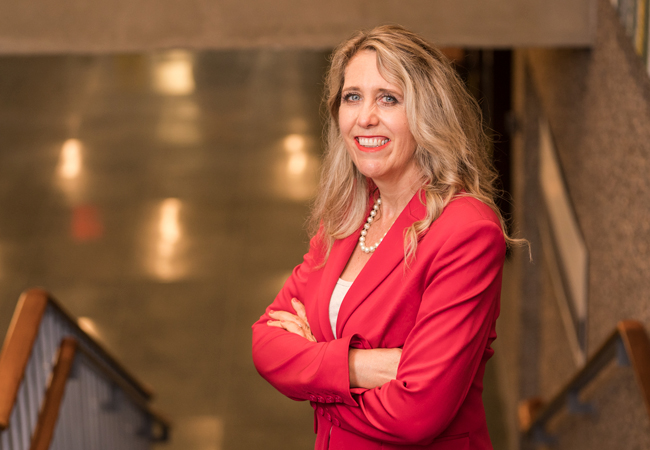
“This really matters in literature, because a discussion about a concrete concept in math or science is very different from a discussion around fiction, which often brings up ideas about things that are difficult to talk about in mediated spaces, like identity and culture,” she explains. “What kinds of facilitation moves do we need to make in order to create safe spaces for students to have those deeper conversations?”
Students Today, Teachers Tomorrow
While, as executive director of teacher education at Penn GSE, Sexton acknowledges the struggles today’s teachers face, he expresses an abundance of hope for the new generations preparing to enter the classroom.
“If I weren’t hopeful, I wouldn’t be doing this job,” he says. “I do this work because I believe we are preparing novice teachers to go out and not only thrive in their schools but contribute to making them, and the profession as a whole, better. Penn GSE has all of these pieces—the right programs, the right faculty members, and the right students, who are this incredibly intelligent, caring group of people—to amplify some of the best thinking about the knotty problems of teaching and learning today.”
Dean Grossman shares that optimism, pointing out that the School’s use of practice-based education ensures that aspiring teachers have boundless opportunities to try different styles and strategies—and to receive abundant support while doing so—before they enter the field as professionals. The better prepared they are, the less susceptible to burnout they will be and the longer they will stay in the profession.
And Penn GSE’s movement to expand research into teacher learning, she adds, will give faculty at universities nationwide a better understanding of what teachers need, during their preparation and far beyond.
“As many challenges as there are, I always tell people who choose teaching that they are coming into the most important profession in the world—one where you never have to worry about whether you are making a difference,” Grossman says. “If you’re a teacher, you wake up every morning knowing that there are young people depending on you. And teachers need to be able to depend on us.”
This article appeared in the Fall 2022 issue of The Penn GSE Magazine.

